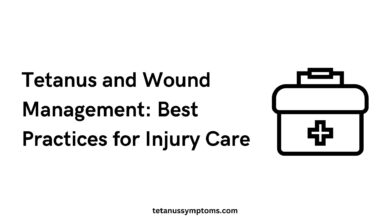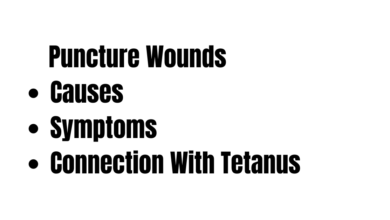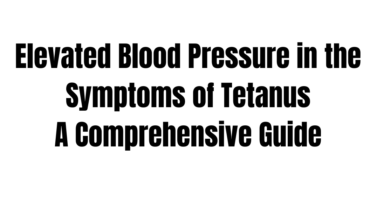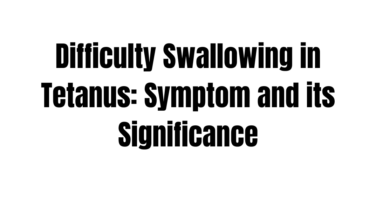Arching of the Back (Opisthotonos): Symptoms And Treatment

Now we are going to unravel the mystery of Arching of the Back (Opisthotonos): symptoms and treatment. Tetanus, caused by the bacterium Clostridium tetani, is a formidable infection presenting a distinctive symptom: the arching of the back. In this comprehensive 1200-word exploration, we delve into the intricacies of this symptom, understanding its physiological underpinnings, the clinical landscape it signifies, and the critical importance of timely medical intervention.
The Intricacies of Tetanus: A Brief Overview
What is Tetanus?
Tetanus is an acute, potentially fatal disease resulting from the neurotoxins produced by Clostridium tetani bacteria. These toxins infiltrate the nervous system, causing a cascade of symptoms.
Role of Tetanus Toxins
The toxins, tetanospasmin and tetanolysin, are responsible for the muscle contractions and tissue destruction characteristic of tetanus.
Decoding Opisthotonos: The Arching Phenomenon
Understanding Opisthotonos
Opisthotonos, the pronounced arching of the back, is a hallmark of advanced tetanus. It arises due to the spasm of the extensor muscles, causing the body to curve backward in an arched position.
Read More about : Opisthotonos
Muscular Rigidity and Tetanus Toxins
The toxins interfere with inhibitory neurons in the central nervous system, disrupting the balance between opposing muscle groups and resulting in sustained contractions.
Clinical Presentation: Recognizing Tetanus Arching
Onset and Progression
Arching of the back typically manifests a few days to several weeks after the introduction of tetanus spores into the body, often through wounds or injuries.
Accompanying Symptoms
In addition to opisthotonos, individuals with tetanus may experience muscle stiffness, especially in the jaw (trismus), difficulty swallowing (dysphagia), and generalized muscle spasms.
Risk Factors and Complications
Wound Contamination and Tetanus
Tetanus spores thrive in environments rich in organic matter, entering the body through wounds contaminated with soil, manure, or other substances.
Complications of Untreated Tetanus
Without prompt and proper treatment, tetanus can lead to respiratory failure, pneumonia, and cardiovascular complications, posing a severe threat to life.
For More Information : Word Health Organization
Diagnosis and Urgent Medical Intervention
Clinical Assessment and History
Diagnosing tetanus involves a thorough clinical assessment, relying on the patient’s medical history, recent injuries, and the characteristic symptoms.
Wound Care and Tetanus Vaccination
Immediate wound care, including cleaning and disinfection, is crucial. Tetanus vaccination, such as the DTaP or Tdap series, plays a pivotal role in prevention.
Administration of Tetanus Antitoxin
In severe cases, tetanus antitoxin is administered to neutralize circulating toxins, arresting their detrimental effects on the nervous system.
Preventive Strategies: Guarding Against Tetanus
The Significance of Tetanus Vaccination
Routine tetanus vaccination is paramount. It not only prevents the onset of symptoms but also mitigates the severity of the disease if contracted.
Booster Shots: Reinforcing Immunity
Regular booster shots, especially for those at higher risk due to occupation or environmental exposure, are essential to maintaining adequate immunity.
Navigating Life After Tetanus: Recovery and Long-Term Effects
Recovery Journey
Surviving tetanus involves a prolonged recovery period, often requiring rehabilitation to address muscle weakness and stiffness.
Long-Term Effects and Rehabilitation
While some individuals may experience lingering muscle effects, rehabilitation measures can significantly improve overall functionality.

Conclusion: Vigilance, Vaccination, and Timely Action
In the realm of infectious diseases, tetanus, with its arching signature, underscores the importance of vigilance and proactive vaccination. Understanding the intricacies of this silent threat empowers individuals and communities to take swift action, turning the tide against a potentially fatal adversary.
More Detail : Symptoms Of Tetanus

What specifically causes the arching of the back in tetanus?
The arching, known as opisthotonos, is induced by the toxins tetanospasmin and tetanolysin, which disrupt normal muscle control in the nervous system.
How is tetanus diagnosed, and is it a rapid process?
Diagnosis involves a clinical assessment and history. While it can be rapid, confirming the presence of tetanus may involve additional laboratory tests.
Can tetanus be transmitted between individuals?
No, tetanus is not a contagious disease; it is contracted through the introduction of the bacterium into wounds.
Aside from vaccination, are there other preventive measures for tetanus?
Proper wound care, especially for injuries in potentially contaminated environments, is crucial in preventing tetanus.




